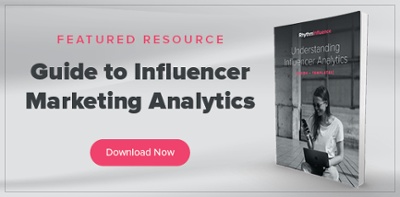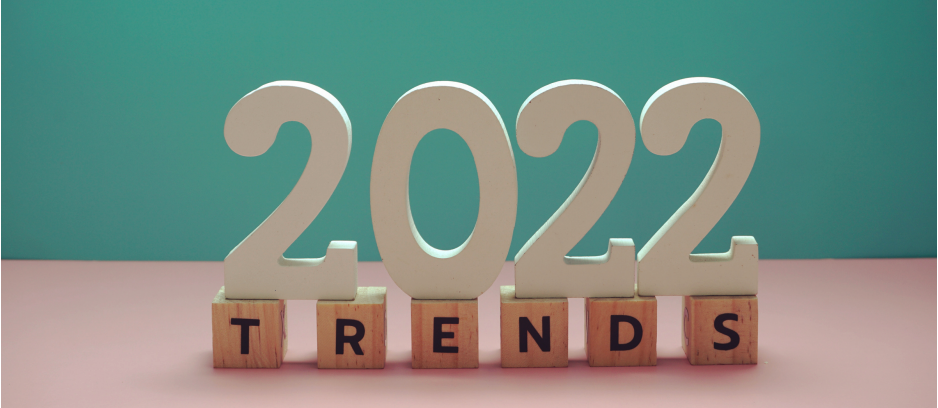Brand safety is no new fad. For years, brands have been hyper-aware of their public perceptions and have worked to ensure they are presenting a clean, family-friendly, and accessible image. While it may seem easy to do— how hard can it be to never say or do anything offensive?— the emergence of influencer marketing has forced brands to not only be responsible for their own image, but for the public perception of their brand partners as well. Naturally, this has encouraged brands to only partner with those Influencers who share the same moral code or brand persona as themselves.
For example, if you ran a vegan beauty brand you would naturally prefer to work with Influencers who lived the same lifestyle. This is where tech comes in to ensure brand safety. While putting out a cold call for vegan influencers may work in your favor, a more streamlined way to find an Influencer to partner with who lives by the same ethics as you do is with the use of brand safety tech.
At RhythmInfluence, we get some uber-specific requests from brands looking for the best Influencer to be the face of their campaigns. Some brands won’t partner with an Influencer who has ever posted about drugs or alcohol, others only want to partner with Influencers who prominently feature their pets in their posts.
Brands need to be aware of an Influencer’s history and whether they have racist, sexist, or otherwise offensive posts, and feel confident in the tools they are using to review. With brand safety apps and technology, you can narrow down your search to only the Influencers who live a lifestyle that aligns with your brand during both the influencer vetting process and your next campaign.
The Importance of Brand Safety in 2021
Over the past couple of years the world has undergone monumental change. More than just a trend, our country and all of us who occupy it have recently been coming to terms with our behavior and a mass social examination has taken place. Left and right, brands and Influencers are finding themselves suddenly tasked with answering for everything from their actions and words to their past Tweets and outdated Instagram posts.
The unease that brands feel about dirt on their partners being dug up isn’t unfounded. Recently, Jeopardy! made a flood of headlines when it was revealed that their choice to continue Alex Trebek’s hosting legacy would be their former executive producer, Mike Richards. The announcement was made and less than a week later Richards stepped down before his hosting duties could begin because a slew of sexist and offensive comments he made in 2013 and 2014 were brought to the light. This event makes Jeopardy! the latest brand to have their reputation placed at risk by an ill-behaving public figurehead.
Of course, for an organization with their history and degree of popularity, Jeopardy! as a brand won’t face nearly as many repercussions as a smaller or emerging brand would. For all other brands without such a legacy, they have more to lose should they partner with a controversial figure.
In 2021, consumers expect more from the brands they support than ever before. It’s no longer enough for brands to have a solely transactional relationship with their customers— the modern consumer is more knowledgeable and informed than in the past.
In a world where everyone has evolved into an ethical consumer, brands need to be vocal about their moral code in order to retain customers. With 90% of the United States reporting that they would be prompted to boycott a brand for irresponsible business actions, brands need to make informed decisions about the way they are perceived if they want to build a sustainable brand community. In the age of influencer marketing, companies are not only responsible for their own actions, but for the actions of the Influencers they choose to partner with on campaigns as well.
Finding Safe Influencers for Marketing Campaigns
There are two times when a brand will want to use brand safety tech: during the influencer vetting process and for ongoing reporting during the campaign.
Influencer Vetting for Brand Alignment
The vetting process is where your brand safety tech will do the most heavy lifting. This is when you will use it to dive deep into the past and current internet footprint of your Influencers of choice. After identifying Influencers who are a match with your ideal audience, tier of Influencer (from micro to macro to mega), and the goals of your campaign, companies will want to make sure to conduct a deep dive on these candidates to find the best match.
Once you have a list of prospects, you can run them through your brand safety tool and filter their content to flag for actions such as smoking, nudity, and drug use. From there you’ll have a refined list of eligible Influencers who have been thoroughly vetted to ensure they abide by your brand’s lifestyle.
Thoroughly evaluating creators prior to the influencer outreach process saves time, effort, and budget by avoiding spending time on those who don’t pass the brand safety check.
Ongoing Influencer Monitoring for Brand Safety
One misstep is powerful enough to derail an entire campaign or brand. Run regular reports on Influencers during campaigns or long-term partnerships to make sure they are still performing on social media in line with your brand. If your influencer partner behaves in an unsavory way or posts content that does not align with your brand, you want to be the first one to know.
Brand safety tech allows brands to take a proactive approach to their influencer partnerships, instead of being left in the dark to do damage control and use PR or brand resources for unexpected issues.
Building Tight Contracts + Clear Guidelines for Influencers
While our own evaluation of an Influencer’s public image is a piece of the puzzle, we also need to protect brands using airtight contracts that spell out exactly how the brand expects the Influencer to behave during the activation. By creating detailed contracts that ensure Influencers are also contractually obligated to follow guidelines during the campaign, we can protect both parties from an unexpected brand safety risk.
How to Use Brand Safety Influencer Tech
At RhythmInfluence, we use Affable to flag any posts that may fall into a specific brand’s questionable content bucket. Some content that a brand may want to flag as undesirable would be: nude or partially nude images, posts about unhealthy or high sugar products, nicotine use, drug or alcohol consumption, COVID-19 mentions or commentary, politically charged language or inflammatory content.
There are a few ways you can use brand safety influencer tech like Affable to flag social media content, such as:
- Using image-based tech to scan pictures for questionable content eg. Affable was able to detect smoking pictures on a shortlisted influencer’s feed
- Searching across historical content uploaded by Influencers for a holistic view of their Internet presence
- Finding Influencers that have (or have not) collaborated with brand competitors in the past to avoid conflict of interest
- To find Influencers who have (or have not) posted about controversial topics or topics that clash with brand guidelines
- Determining whether or not an Influencer has been in the news for anything negative
As the influencer marketing industry continues to evolve as new apps gain in popularity, brands are tasked with keeping up with current trends in order to continue contributing to the global conversation. Brand safety technology is designed to ensure that brands and their influencer partners can continue contributing in a sensible and inclusive way.




SUBMIT YOUR COMMENT